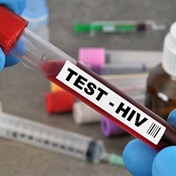The year 2010 marks a turning point in the fight against HIV. The disease is by no means beaten with an estimated 5.7 million people suffering from it in this country alone. In 2009, worldwide as many as 33.3 million people were believed to be living with HIV. This is a slight increase from 2008, in large part because many more people are accessing antiretroviral (ARV) treatment and living longer with the virus.
"For the first time, we have broken the trajectory of the Aids epidemic," said Michel Sidebé, executive director of UNAIDS. "But our successes have not come without sacrifice - some 30 million people have lost their lives to Aids, and an estimated 10 million people are waiting for treatment."
Together with the decline (however slight) in new infections, 2010 has seen major strides being made against infection by the HI virus. Just last week researchers from a large international study, iPrEx, announced that an antiretroviral drug currently used to treat people with HIV has been found to offer substantial protection against HIV infection. This new study has revealed that taking the ARV, Truvada, once a day reduces the risk of HIV infection by nearly 44% in gay men.
The protection, known as "pre-exposure prophylaxis" or "PreP," is the first new form available to men, especially men who cannot use condoms because they sell sex, are in danger of prison rape, are under pressure from partners or lose their inhibitions when drunk or high.
"This has been a good year in terms of HIV preventions," said Prof Linda-Gail Bekker from the Desmond Tutu HIV Foundation who was involved in the South African arm of the trial.
Apart from the positive results achieved in this study, in July 2010, a study known as CAPRISA 004 found evidence that a topical gel containing 1% tenovofir helped reduce HIV negative women's risk of HIV infection via vaginal sex. The microbiocide gel called Pro2000 reduces the risk of HIV infection by 30% in women.
Challenges
Although these results provide a glimmer of hope for the future, currently the HIV/Aids situation is still dismal, especially in light of the high incidence of co-infection of HIV and TB. An estimated 70% of South African TB patients are co-infected with HIV. Not only does HIV suppress a person's immune system, significantly increasing their risk of acquiring TB, but co-infection with both HIV and TB creates makes TB more difficult to detect and treat.
Brian Pazvakavambwa of the World Health Organisation also pointed out that access to treatment for tuberculosis patients co-infected with HIV and for pregnant women was comparatively low. He blamed weak health systems and fragmented implementation for the failure to link programmes such as prevention of mother-to-child transmission (PMTCT) with treatment.
While access to PMTCT has increased significantly, resulting in fewer children being born with HIV, only 15% of HIV-positive pregnant women received ARVs in 2009.
"A lot of work still needs to be done," said Pazvakavambwa. "We need to continue expanding and linking all parts of the response; if we can link our programmes better we can do better in terms of all health outcomes." – (Wilma Stassen/Sapa/PlusNewsIRIN, November 2010)
Read more:
HIV peer forum
The story of a virus: HIV/Aids timeline
HIV/Aids Centre




 Publications
Publications
 Partners
Partners














